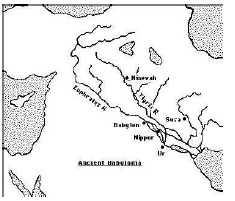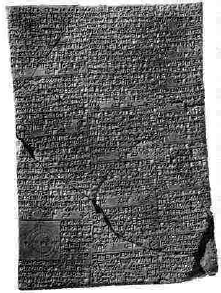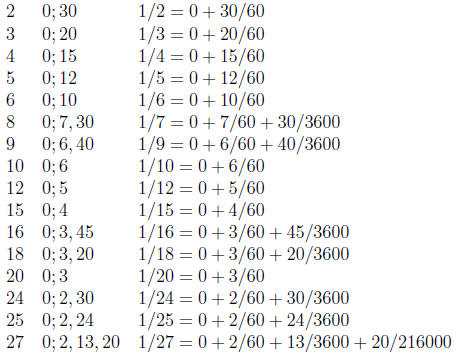- Home
- INTERMEDIATE ALGEBRA
- Course Syllabus for Algebra I
- Mid-Plains Community College
- FRACTION OF A WHOLE NUMBER
- Systems of Linear Equations
- MATH FIELD DAY
- Course Outline for Finite Mathematics
- Calculus
- Algebra Final Examination
- Math 310 Exam #2
- Review of Trigonometric Functions
- Math 118 Practice test
- Precalculus Review
- Section 12
- Literal Equations
- Calculus Term Definitions
- Math 327A Exercise 2
- Public Key Algorithms II
- Maximizing Triangle Area
- Precalculus I Review for Midterm
- REVIEW OF A FIRST COURSE IN LINEAR ALGEBRA
- Math 6310 Homework 5
- Some Proofs of the Existence of Irrational Numbers
- ALGEBRAIC PROPERTIES OF MATRIX OPERATIONS
- Math 142 - Chapter 2 Lecture Notes
- Math 112 syllabus
- Math 371 Problem Set
- Complex Numbers,Complex Functions and Contour Integrals
- APPLICATIONS OF LINEAR EQUATIONS
- Week 4 Math
- Fractions
- Investigating Liner Equations Using Graphing Calculator
- MATH 23 FINAL EXAM REVIEW
- Algebra 1
- PYTHAGOREAN THEOREM AND DISTANCE FORMULA
- Georgia Performance Standards Framework for Mathematics - Grade 6
- Intermediate Algebra
- Introduction to Fractions
- FACTORINGS OF QUADRATIC FUNCTIONS
- Elementary Algebra Syllabus
- Description of Mathematics
- Integration Review Solutions
- College Algebra - Applications
- A Tip Sheet on GREATEST COMMON FACTOR
- Syllabus for Elementary Algebra
- College Algebra II and Analytic Geometry
- Functions
- BASIC MATHEMATICS
- Quadratic Equations
- Language Arts, Math, Science, Social Studies, Char
- Fractions and Decimals
- ON SOLUTIONS OF LINEAR EQUATIONS
- Math 35 Practice Final
- Solving Equations
- Introduction to Symbolic Computation
- Course Syllabus for Math 935
- Fractions
- Fabulous Fractions
- Archimedean Property and Distribution of Q in R
- Algebra for Calculus
- Math112 Practice Test #2
- College Algebra and Trigonometry
- ALGEBRA 1A TASKS
- Description of Mathematics
- Simplifying Expressions
- Imaginary and Complex Numbers
- Building and Teaching a Math Enhancement
- Math Problems
- Algebra of Matrices Systems of Linear Equations
- Survey of Algebra
- Approximation of irrational numbers
- More about Quadratic Functions
- Long Division
- Algebraic Properties of Matrix Operation
- MATH 101 Intermediate Algebra
- Rational Number Project
- Departmental Syllabus for Finite Mathematics
- WRITTEN HOMEWORK ASSIGNMENT
- Description of Mathematics
- Rationalize Denominators
- Math Proficiency Placement Exam
- linear Equations
- Description of Mathematics & Statistics
- Systems of Linear Equations
- Algebraic Thinking
- Study Sheets - Decimals
- An Overview of Babylonian Mathematics
- Mathematics 115 - College Algebra
- Complex Numbers,Complex Functions and Contour Integrals
- Growing Circles
- Algebra II Course Curriculum
- The Natural Logarithmic Function: Integration
- Rational Expressions
- QUANTITATIVE METHODS
- Basic Facts about Rational Funct
- Statistics
- MAT 1033 FINAL WORKSHOP REVIEW
- Measurements Significant figures
- Pre-Calculus 1
- Compositions and Inverses of Functions
An Overview of Babylonian Mathematics
A.1 Introduction to Babylonian Mathematics
The Babylonians lived in Mesopotamia, a fertile crescent between the Tigris and
Euphrates rivers. Here is a map of the region where the civilization flourished.
|
The region had been the center of the Sumerian civ- ilization which flourished before 3500 BC. This was an advanced civilization building cities and supporting the people with irrigation systems, a legal system, admin- istration, and even a postal service. Writing developed and counting was based on a sexagesimal system, that is base 60. Around 2300 BC the Akkadians invaded the area and for some time the less civilized culture of the Akkadians mixed with the more advanced culture of the Sumerians. The Akkadians invented the abacus as a tool for counting and they developed somewhat |
 |
clumsy methods of arithmetic with addition, subtraction,
multiplication and division
all playing a part. The Sumerians, however, revolted against Akkadian rule and
by
2100 BC they were back in control.
The Babylonian civilization, whose mathematics is the subject of this article,
replaced that of the Sumerians starting around 2000 BC. The Babylonians were a
Semitic people who invaded Mesopotamia, defeated the Sumerians and by about
1900 BC established their capital at Babylon.
The Sumerians had developed an abstract form of writing based on cuneiform
(i.e. wedge-shaped) symbols. Their symbols were written on wet clay tablets
which
were baked in the hot sun. Many thousands of these tablets have survived to this
day. It was the use of a stylus on a clay medium that led to the use of
cuneiform
symbols since curved lines could not easily be drawn. The later Babylonians
adopted
the same style of cuneiform writing on clay tablets. A picture of one of their
tablets
Babylonian mathematics is to the right.
|
Many of the tablets concern topics which are fasci- nating, although they do not contain deep mathemat- ics. For example we mentioned above the irrigation sys- tems of the early civilizations in Mesopotamia. Muroi writes: It was an important task for the rulers of Mesopotamia to dig canals and to maintain them, be- cause canals were not only necessary for irrigation but also useful for the transport of goods and armies. The rulers or high government officials must have ordered Babylonian mathematicians to calculate the number of workers and days necessary for the building of a canal, and to calculate the total expenses of wages of the workers. |
 |
There are several Old Babylonian mathematical
texts in which various quantities concerning the digging of a canal are asked
for.
They are YBC 4666, 7164, and VAT 7528, all of which are written in Sumerian ...,
and YBC 9874 and BM 85196, No. 15, which are written in Akkadian ... . From the
mathematical point of view these problems are comparatively simple ...
The Babylonians had an advanced number system, in some ways more advanced
than our present systems. It was a positional system with a base of 60 rather
than
the system with base 10.
The Babylonians divided the day into 24 hours, each hour into 60 minutes, each
minute into 60 seconds. This form of counting has survived for 4000 years. To
write 5h
25' 30", i.e. 5 hours, 25 minutes, 30 seconds, is just to write the sexagesimal
fraction,
5 25/60 30/3600. We adopt the notation 5;25,30 for this sexagesimal number. As
a base 10 fraction the sexagesimal number 5;25,30 is 5 4/10 2/100 5/1000 which
is
written as 5.425 in decimal notation.
Perhaps the most amazing aspect of the Babylonian's calculating skills was their
construction of tables to aid calculation. Two tablets found at Senkerah on the
Euphrates in 1854 date from 2000 BC. They give squares of the numbers up to 59
and cubes of the numbers up to 32. The table gives 82 = 1, 4 which stands for

and so on up to 592 = 58, 1(= 58×60+1 = 3481). The Babylonians used the formula

to make multiplication easier. Even better is their formula

which shows that a table of squares is all that is
necessary to multiply numbers,
simply taking the difference of the two squares that were looked up in the table
then
taking a quarter of the answer.
Division is a harder process. The Babylonians did not have an algorithm for long
division. Instead they based their method on the fact that

so all that was necessary was a table of reciprocals. We
still have their reciprocal
tables going up to the reciprocals of numbers up to several billion. Of course
these
tables are written in their numerals, but using the sexagesimal notation we
introduced
above, the beginning of one of their tables would look like:

Now the table had gaps in it since 1/7, 1/11, 1/13, etc.
are not finite base 60
fractions. This did not mean that the Babylonians could not compute 1/13. They
would write

and these values, for example 1/90, were given in their
tables. In fact there are
fascinating glimpses of the Babylonians coming to terms with the fact that
division
by 7 would lead to an infinite sexagesimal fraction. A scribe would give a number
close to 1/7 and then write statements such as
... an approximation is given since 7 does not divide.
Babylonian mathematics went far beyond arithmetical calculations. We now ex-
amine some algebra which the Babylonians developed, particularly problems
Babylo-
nian mathematics which led to equations and their solution. The Babylonians were
famed as constructors of tables. Now these could be used to solve equations. For
example they constructed tables for n3+n2 then, with the aid of these tables,
certain
cubic equations could be solved. For example, consider the equation

Note that we are using modern notation, and nothing like
this symbolic representation
existed in Babylonian times. The Babylonians could handle numerical examples of
such equations. They did this by using certain rules, which indicates that they
did
have the concept of a typical problem of a given type and a typical method to
solve it.
For example in the above case they would (in modern notation) multiply the
equation
by a2 and divide it by b3 to get

Setting y = ax/b gives the equation y3 + y2 = ca2=b3 which
could now be solved
by looking up the n3 + n2 table for the value of n satisfying n3 + n2 = ca2/b3.
When
a solution was found for y then x was found by x = by/a. We cannot stress too
much
that all this was done without algebraic notation.
Again a table would have been looked up to solve the linear equation ax = b.
They
would consult the 1/n table to find 1/a and then multiply the sexagesimal number
given in the table by b. An example of a problem of this type is the following.
Suppose, writes a scribe, 2/3 of 2/3 of a certain quantity
of barley is taken, 100 units of barley are added and the
original quantity recovered.
The problem posed by the scribe is to find the quantity of barley. The solution
given by the scribe is to compute 0; 40 times 0; 40 to get 0; 26, 40. Subtract
this
from 1; 00 to get 0; 33, 20. Look up the reciprocal of 0; 33, 20 in a table to
get 1; 48.
Multiply 1; 48 by 1, 40 to get the answer 3, 0.
It is not that easy to understand these calculations by the scribe unless we
translate
them into modern algebraic notation. We have to solve

which is, as the scribe knew, equivalent to solving

This is why the scribe computed
 subtracted the answer from 1 to get
subtracted the answer from 1 to get
 ,
,
then looked up  and so x was found from
and so x was found from
 multiplied by 100 giving
multiplied by 100 giving
180 (which is 1; 48 times 1, 40 to get 3, 0 in sexagesimal).
To solve a quadratic equation the Babylonians essentially used the standard formula.
They considered two types of quadratic equation, namely x2 + bx = c and
x2 - bx = c where here b, c were positive but not necessarily integers. The form
that
their solutions took was, respectively

Notice that in each case this is the positive root from
the two roots of the quadratic
and the one which will make sense in solving "real" problems. For example
problems
which led the Babylonians to equations of this type often concerned the area of
a
rectangle. For example if the area is given and the amount by which the length
exceeds the width is given, then the width satisfies a quadratic equation and
then
they would apply the first version of the formula above.
A problem on a tablet from Babylonian times states that the area of a rectangle
is 1, 0 and its length exceeds its width by 7. The equation x2 +7x = 1, 0 is, of
course,
not given by the scribe who finds the answer as follows.
Compute half of 7, namely 3;30, square it to get 12; 15.
To this the scribe adds 1, 0 to get 1; 12, 15. Take its
square root (from a table of squares) to get 8; 30. From
this subtract 3;30 to give the answer 5 for the breadth
of the triangle.
Notice that the scribe has effectively solved an equation of the type x2 + bx = c
by using x = ((b/2)2 + c) - (b/2). Berriman gives 13 typical examples of
problems
leading to quadratic equations taken from Old Babylonian tablets.
If problems involving the area of rectangles lead to quadratic equations, then
problems involving the volume of rectangular excavation (a "cellar") lead to
cubic
equations. The clay tablet BM 85200+ containing 36 problems of this type, is the
earliest known attempt to set up and solve cubic equations. Of course the Babylo-
nians did not reach a general formula for solving cubics. This would not be
found for
well over three thousand years.


